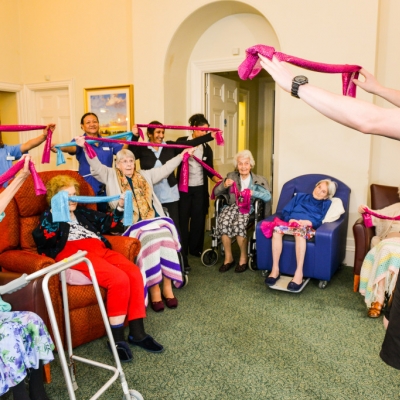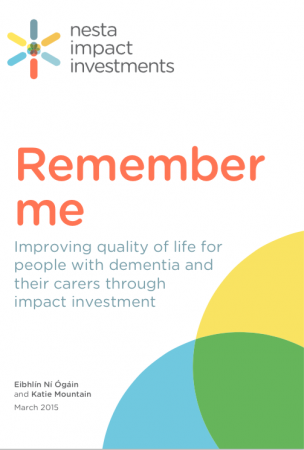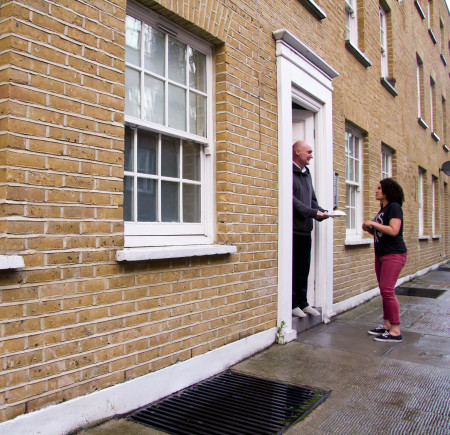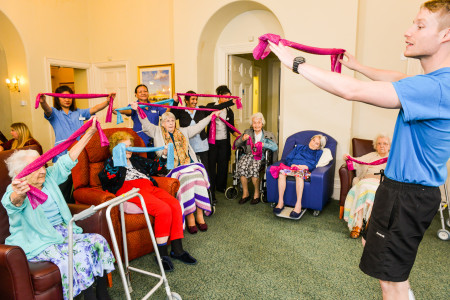Oomph! stands for ‘Our Organisation Makes People Happy’: Martin can vouch for that. He’s a care home resident who recently joined Oomph! on a visit to Brooklands Auto Museum, bringing back memories of a 40 year career in auto journalism.
“It was a wonderful day,” he said afterwards.
For Nesta Impact Investments, a shareholder in Oomph!, the impact on Martin’s mental and physical wellbeing was a key part of its decision to keep investing in the business.
Martin’s not alone in rating the service; leading regional care groups including WCS Care – one of the very few providers to have five homes recognised as Outstanding by the Care Quality Commission – are among others jumping on board when outings start running from April.
Nesta Impact Investments made its third investment in the business in this £1.5 million round
It will enable the company to rollout its radical £4 million new excursion offering to individuals in care.
We first invested in the business in 2013 and were delighted to be joined in the latest round by Mike Parsons, founder of Barchester Healthcare, and The Care and Wellbeing Fund.
Dedicated to enhancing the mental, physical and emotional wellbeing of older adults, Oomph! has already had tremendous success training staff in care homes and community settings to deliver outstanding activities and exercise for older adults.
There’s strong evidence of the impact Oomph! has on people’s lives. Oomph!’s recent impact report shows that those taking part in Oomph! exercise classes say their quality of life has improved and services have seen a 138 per cent increase in uptake, with 78 per cent of care home staff reporting a significant impact on job satisfaction.
We were attracted by Oomph!’s innovative and scalable approach to bringing health and wellbeing benefits to older people
Innovation in the area of the leisure and health sector in which Oomph! operates has historically been slow but will be key to solving one of society’s biggest challenges – how we provide good quality care to an increasing older population. The investment forms part of our strategy to invest in businesses improving health and wellbeing outcomes in the UK, especially for older people and disadvantaged groups.
Oomph!’s excursion service – Oomph! Out & About – will put regular and tailored excursions within reach of any care home across the country. Homes that organise outings themselves will benefit from up to three times more trips for half the cost, according to analysis by Deloitte. The service will provide up to six trips a month for a flat fee, starting from £160 per excursion. It is currently piloting with several care homes in Surrey and Hampshire, and will roll out nationally from April.
Completing this substantial investment round is a key success for Ben Allen, CEO and founder. “We know that keeping care home residents active and connected to their local communities is vital to their wellbeing,” he said, “but organising and affording this is a real issue for the industry.
“This funding allows us to rollout our model, which revolutionises out-of-home activity provision and makes it possible for any care home across the country to access a fantastic programme of meaningful trips.”
So we’re delighted to continue supporting Oomph!, and believe that this success, coupled with the financial success of our investment in the company, will prove a winning formula.
Find out more about Nesta Impact Investments
For more information on Out & About contact hello@oomph-wellness.org or call 0203 601 6363
– See more at: http://www.nesta.org.uk/blog/out-and-about-why-were-investing-oomphs-excursion-service#sthash.VZnTIslp.dpuf

 What do Olive’s improving stiff joints have to do with an exit valuation? How does Norman’s trip to Burnley FC relate to an internal rate of return?
What do Olive’s improving stiff joints have to do with an exit valuation? How does Norman’s trip to Burnley FC relate to an internal rate of return?  Dementia is one of the biggest – and fastest growing – challenges facing our society. As more people develop the disease, there is a growing need for new innovation in the care and support for people living with dementia and their carers.
Dementia is one of the biggest – and fastest growing – challenges facing our society. As more people develop the disease, there is a growing need for new innovation in the care and support for people living with dementia and their carers.

 often physical – well-being of care home residents. Inspection criteria from the
often physical – well-being of care home residents. Inspection criteria from the 
 What is the investment for?
What is the investment for? But last night at an event we held for one of our social investments, Oomph! (Our Organisation Makes People Happy!) I learnt that the very way we speak to people suffering from dementia can make a huge difference to the way they respond. This was not so much to do with speed but the actual length of sentences. I found out that in recent research many older people with dementia find it hard to cope with sentences of about eight words. In fact, for many understanding sentences of over four words can be tough. I wish I had known this when it came to talking with my own grandmother, who sadly died several years ago.
But last night at an event we held for one of our social investments, Oomph! (Our Organisation Makes People Happy!) I learnt that the very way we speak to people suffering from dementia can make a huge difference to the way they respond. This was not so much to do with speed but the actual length of sentences. I found out that in recent research many older people with dementia find it hard to cope with sentences of about eight words. In fact, for many understanding sentences of over four words can be tough. I wish I had known this when it came to talking with my own grandmother, who sadly died several years ago. Today London will host the first
Today London will host the first 